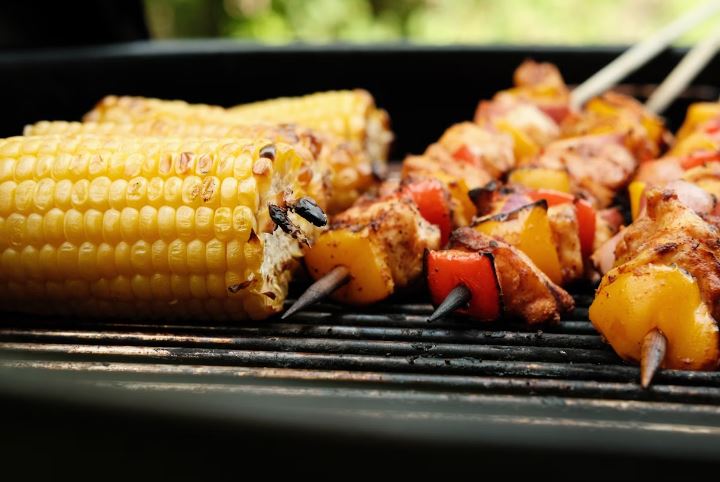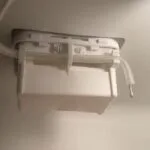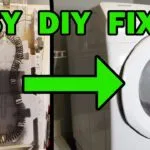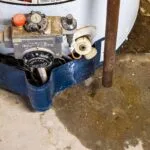To troubleshoot a Weber grill with no gas flow, first check the gas tank and regulator. Ensure the gas tank is open and the regulator is properly connected.
Grilling season brings excitement and the joy of outdoor cooking to many. Yet, encountering issues like no gas flow in your Weber grill can quickly dampen spirits. A common hurdle for many grill enthusiasts, this problem can usually be resolved with some basic troubleshooting steps.
Understanding the root causes, from a depleted gas tank to a faulty regulator, can save the day. This guide aims to equip you with the knowledge to identify and rectify the issue swiftly, ensuring your grilling plans remain unspoiled. Remember, safety first: always perform checks with the grill off and cooled down. Let’s dive into how you can get back to grilling your favorites without delay.
Identifying The Issue
Identifying the issue with your Weber grill when there’s no gas flow can be tricky. Knowing where to start is key. Let’s uncover the signs and dispel common misconceptions.
Signs Of Gas Flow Problems
- Weak flame or no flame at all.
- Grill not reaching desired temperature.
- Ignition fails despite multiple attempts.
- Propane tank feels full, but gas won’t flow.
Common Misconceptions
| Misconception | Reality |
|---|---|
| Tank is always at fault | Regulators and burners can cause issues too. |
| More turning, better flow | Over-tightening can actually stop gas flow. |
| Outdoor temperature doesn’t matter | Cold weather can affect propane flow. |
| Hoses never fail | Blockages and leaks in hoses are common. |

Credit: meltodalton.com
Safety First
Safety First – Grilling can be a delightful experience. Yet, when your Weber Grill refuses to flow gas, it’s crucial to address the issue cautiously. Safety is paramount. Before diving into troubleshooting, let’s talk about safety tips and knowing when to call a pro.
Pre-troubleshooting Safety Tips
- Turn off the gas at the source immediately.
- Ensure the grill is cool and hasn’t been used recently.
- Remove flammable materials from the grill area.
- Check for gas leaks by applying soapy water to connections.
- Wear protective gloves to safeguard your hands.
- Keep a fire extinguisher nearby as a precaution.
When To Seek Professional Help
If the following occurs, contact a certified technician:
| Condition | Action |
|---|---|
| Gas Smell Persists | Stop and seek help. |
| No Gas Flow After Checks | Professional inspection needed. |
| Grill Parts Damaged | Parts may need replacement. |
| Unsure About Safety | Get expert advice. |
Initial Checks
Before grilling, a Weber Grill might not get gas. Don’t worry. Let’s start with some initial checks to find the problem.
Inspecting The Gas Tank
First, we need to look at the gas tank. Here’s how:
- Make sure the tank is connected properly.
- Check if the tank has gas. Use a gauge.
- Look for any leaks by using soapy water.
If the tank is empty, refill it. If it leaks, get a new tank.
Assessing The Regulator
The regulator controls the gas flow. To check it:
- Turn off the gas at the tank.
- Disconnect the regulator.
- Reconnect it and turn the gas on slowly.
If the grill works, great! If not, you might need a new regulator.

Credit: m.youtube.com
The Burner Test
Grill masters often face a common challenge: no gas flow to the grill. The Burner Test can help solve this. It checks if gas reaches the grill’s burners properly. Follow the steps below to ensure your Weber Grill works flawlessly.
Performing A Burner Flame Check
- Ensure the gas tank is full and open the valve.
- Remove the grill grate and flavorizer bars.
- Turn on one burner to the “High” setting.
- Observe the flame color and size.
Tip: A proper flame should be blue with a slight yellow tip. It indicates good gas flow and burner condition.
Interpreting The Results
If the flame is weak or yellow, there might be a blockage. Clean the burner tubes for better gas flow. A strong blue flame means your grill is ready. Check each burner using the above steps for a complete test.
| Flame Color | Condition | Action Required |
|---|---|---|
| Blue with Yellow Tip | Normal | None |
| Weak or Yellow | Possible Blockage | Clean Burner Tubes |
| No Flame | No Gas Flow | Check Gas Source |
Regulator Reset Procedure
Grill enthusiasts often encounter a common issue: no gas flow. Weber grills are reliable, but may require a regulator reset. This simple fix can restore your grill’s performance. Below is a guide to reset your Weber grill regulator effectively.
Step-by-step Regulator Reset
- Turn off the gas at the propane tank.
- Disconnect the gas line from the tank.
- Remove the regulator from the grill’s burner unit.
- Wait for one minute to reset the regulator’s safety feature.
- Re-attach the regulator to the burner unit tightly.
- Reconnect the gas line to the propane tank.
- Slowly open the propane tank valve.
- Ignite the grill as per the manual’s instructions.
Troubleshooting Post-reset Issues
After a reset, gas flow should resume. If issues persist, follow these steps:
- Check for gas leaks using soapy water.
- Ensure all connections are secure and not cross-threaded.
- Examine the hose for blockages or damage.
- Test the burners for clogs or debris.
- If problems remain, contact Weber support.
Regular maintenance ensures optimal grill performance. Always refer to the Weber manual before taking any troubleshooting steps.
Gas Line Inspections
Let’s talk about Gas Line Inspections for your Weber Grill. Sometimes, your grill won’t start. It might be a gas flow problem. Checking the gas lines can help fix this.
Checking For Obstructions
First, make sure your grill is off and cool. Safety first! Then, follow these steps to check for blockages in your gas lines:
- Remove the gas line from the grill and tank.
- Use a flashlight to look inside the gas line. Look for dirt or bugs.
- If you see any blockages, use a long, thin brush to clean the line.
- Reattach the gas line carefully after cleaning.
Leak Detection Methods
Next, let’s find any gas leaks. A leak can stop gas flow to your grill. Use these methods to check for leaks:
- Soapy Water Test: Mix soap and water. Brush it on the gas line and connections. Turn on the gas. Look for bubbles. Bubbles mean a leak.
- Electronic Gas Detector: Use a gas leak detector for a more detailed check. Follow the device’s instructions.
Remember, if you find a leak, turn off the gas. Call a professional to fix it. Do not use the grill until it’s safe.
Ignition System Evaluation
Is your Weber grill not firing up? Before you panic, let’s evaluate the ignition system. A good starting point is ensuring gas flows to the burners.
Troubleshooting The Igniter
Begin with the grill’s igniter. Here’s a quick checklist:
- Check the battery: Is it dead or improperly placed?
- Inspect wires: Look for loose connections or damage.
- Clean the igniter: Remove dirt or grease buildup.
- Test spark: Press the ignition and check for a spark.
If the igniter still fails, consider replacing it.
Ignition System Maintenance Tips
Keep your grill’s ignition in top shape. Follow these maintenance tips:
- Regular cleaning: Wipe the igniter and surrounding area.
- Battery checks: Replace batteries annually or as needed.
- Wire inspections: Secure any loose connections promptly.
- Professional help: Seek assistance for complex issues.
Maintenance And Prevention
Keeping a Weber Grill in top shape ensures no gas flow issues. Proper maintenance prevents common problems. This guide provides easy-to-follow steps.
Regular Cleaning Routines
Clean grills work best. Dirt can block gas flow. A simple cleaning routine avoids this.
- Check burners for clogs. Use a brush.
- Wipe the grill after use. Use a damp cloth.
- Inspect hoses. Look for twists or kinks.
- Clean the grease trap. Do it often.
These steps ensure smooth operation. They keep gas flowing properly.
Seasonal Storage Advice
Proper storage is vital for longevity. It prevents gas flow issues.
- Turn off the gas supply. Use the valve.
- Cover the grill. Use a breathable cover.
- Store in a dry place. Avoid moisture buildup.
- Check for pests. They can cause damage.
Follow these tips before storing. Your grill will be ready for the next season.

Credit: www.reddit.com
Frequently Asked Questions
Why Isn’t My Weber Grill Getting Gas?
Ensure the propane tank is connected and open. Check for kinks or blockages in the hose, and make sure the burners are clean and properly aligned.
How Do I Fix Low Gas Flow On My Grill?
Start by resetting the regulator; disconnect it, turn off all knobs, wait a minute, then reconnect and try again. Also, inspect for any leaks or hose issues.
What Causes A Weber Grill To Stop Working?
Common causes include a faulty regulator, a depleted propane tank, a clogged burner, or a tripped excess flow valve. Regular maintenance can prevent these issues.
Can A Dirty Grill Restrict Gas Flow?
Yes, grease and food buildup can obstruct the burner tubes, affecting gas flow. Regular cleaning ensures optimal performance and prevents this problem.
How Do I Check For A Gas Leak On My Grill?
Apply soapy water to the connections and hoses. Turn on the gas; bubbling indicates a leak. Fix leaks immediately for safety and to restore proper gas flow.
What Should I Do If My Grill Won’t Ignite?
Check the ignition system for debris and ensure it’s powered if battery-operated. Also, manually light the grill with a match to determine if the issue is with the ignition system.
Conclusion
Wrapping up, resolving a Weber grill’s gas flow issue can often be a simple fix. Regular maintenance and timely checks are key. For those persistent problems, professional help or a detailed manufacturer’s guide might be the answer. Get your grill back to its best and enjoy flawless outdoor cooking sessions once again.




